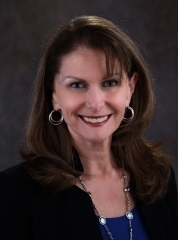
Written by Karen Pryor
Retirement. We spend years planning for it, yet it’s still surprising how quickly it arrives. Have we saved enough? How long will we be able to live on our own? What if the market takes a downturn the year we retire?
Henry, age 65, lived in his mortgage-free home and was working part-time. He was eager to retire, but the advice of his financial advisor was to wait until age 68 to begin taking his Social Security. With a reverse mortgage, Henry was able to “bridge the time gap” with a three-year monthly term payment (non-taxable as loan proceeds) close to the amount of his Social Security. He was able to fully retire and leave the remaining funds in a growing line of credit as added security in the form of an emergency fund.
What is a Reverse Mortgage?
It is a loan for homeowners 62+ that allows them to access a portion of their home’s equity, using the home as collateral. The homeowner is required to keep all property charges (taxes, insurance, HOA dues, etc.) current. The loan generally does not have to be repaid until the last borrower no longer occupies the home as their primary residence. At that time, heirs must refinance the loan (if they want to keep the home) or sell the home to pay it off. All remaining equity will pass to the heirs and most importantly, there is no personal liability if the home sells for less than the loan balance.
How Does a Reverse Mortgage Work?
Although jumbo reverse mortgages are now available, the most common reverse is the FHA Home Equity Conversion Mortgage (HECM), which has been around since 1988. This product is available with both fixed and adjustable rates, but it is the adjustable rate version researchers found most compelling. Why? Because of the payout options, specifically the line of credit (LOC) feature. It comes with a guaranteed growth factor – the unused funds on the line of credit grow at the same rate as the note rate, and the LOC grows regardless of the value of the home.
Let’s say you’re 65 years old and have paid off your home, now worth $765,000. You could qualify for a reverse mortgage up to $389,000 (after costs). If you left those funds on the LOC, that balance would grow. At the end of 10 years, it would be worth approximately $576,000.
How Could a Reverse Mortgage Help Your Retirement?
As noted in Henry’s story above, it might bridge the gap before you begin Social Security, or it might supplement your retirement portfolio by providing the money to fund a grandchild’s education or continue charitable donations to Torrance Memorial. The loan money could also be used as an emergency fund, providing a greater sense of security and allowing you to retire with more confidence.
How does that help to protect your portfolio? According to Barry Sacks, a retired pension attorney who has published research on reverse mortgages, retirees should follow a simple formula: If the market goes up, use the retirement account for income; if the market goes down, use the reverse mortgage.
Is a Reverse Mortgage Right for You?
Studies by the American College of Financial Services (educates and certifies financial planners) showed reverse mortgages as a good tool to extend retirement assets. It is not the right choice for everyone, however. If you’re planning on moving soon, the costs on an FHA HECM can be prohibitive. A home equity line of credit could be a better option for short-term needs. It also may not be right for you if the home needs to remain mortgage-free for a family member. Understanding how a reverse mortgage might work for you is the key to making the right decision for your retirement plan, so consulting with your financial advisor is a good idea.
Karen Pryor is the Broker & Owner of Pryority Lending Group, Inc. located in Torrance, specializing in reverse mortgage financing and the strategic use of housing wealth. Karen is also a member of the Torrance Memorial Professional Advisory Council. NMLS #167985/CA DRE #01170541, karen@pryoritylending.com, 310-753-1924

Links:
- https://www.pacbiztimes.com/2020/02/14/misconceptions-thwart-successful-retirements/
- https://www.ncoa.org/economic-security/home-equity/reverse-mortgages/reverse-mortgage-facts/
- https://www.hud.gov/program_offices/housing/sfh/hecm/hecmhome
- https://www.myhecm.com/reverse-mortgage-basics/reverse-mortgage-line-of-credit-fantastic-heres-why?utm_source=MyHECM.com&utm_campaign=8181e0401c-RSS_EMAIL_CAMPAIGN&utm_medium=email&utm_term=0_b117b6080a-8181e0401c-57480703
- https://www.forbes.com/sites/jamiehopkins/2018/03/30/researchers-say-reverse-mortgages-deserve-a-second-look/#4b72965256b2
- https://www.barrons.com/articles/reverse-mortgages-can-help-house-rich-seniors-free-up-cash-for-retirement-heres-how-they-work-51576330202
- https://mandelman.ml-implode.com/2014/11/exceptional-insight-of-barry-sacks-esq-on-reverse-mortgages/
- https://www.theamericancollege.edu/blog/how-lock-lifetime-retirement-income
- https://hecmadvisorsgroup.com/sequence-risk/






